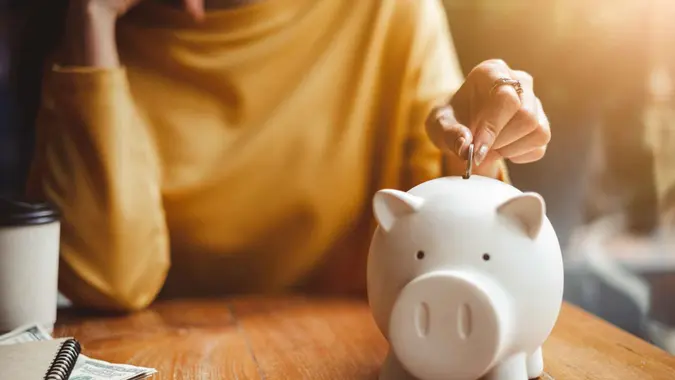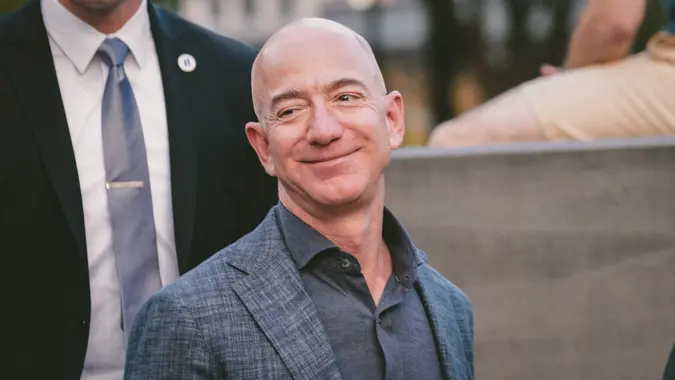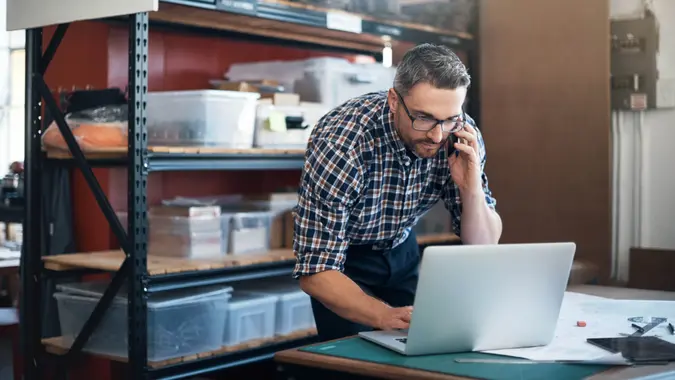I Make 6 Figures a Year Selling Collectibles Online: Here’s How I Do It

Commitment to Our Readers
GOBankingRates' editorial team is committed to bringing you unbiased reviews and information. We use data-driven methodologies to evaluate financial products and services - our reviews and ratings are not influenced by advertisers. You can read more about our editorial guidelines and our products and services review methodology.

20 Years
Helping You Live Richer

Reviewed
by Experts

Trusted by
Millions of Readers
Collecting and selling collectibles has been a passion for many enthusiasts since time immemorial. Whether it’s vintage sports cards, rare gaming memorabilia, Pokémon cards or entertainment artifacts, the world of collectibles can yield six figures or more annually if you know what you’re doing.
GOBankingRates spoke to Tyler Feldman, founder of Inscriptagraphs, a sports memorabilia store, who shared his insights and experiences on how to make a successful living selling collectibles online.
How I Got Into the Collectibles Market
Feldman entered the sports memorabilia industry at a young age. At just 12 years old, he started looking for ways to generate additional cash when his allowance wasn’t sufficient to buy the clothes and shoes he wanted.
“I’ve always loved sports and had an interest in business at the same time, and it was around this time that I went to a baseball card shop to figure out what my childhood baseball cards were worth. It suddenly clicked to me that I could supplement my allowance by investing in baseball cards.”
From there, he started selling memorabilia on eBay, and evolved into a “PowerSeller” almost immediately. At this point he was bringing in approximately $2,000 to $4,000 a month.
“My mom had to take me to the post office every day after school so that I could fulfill my orders. Business was booming in high school!”
Feldman’s experience highlights the significant growth of the online collectibles market over the years, with advancements in technology and strategies enhancing sellers’ capabilities.
How To Sell Collectibles Online
Feldman said that eBay remains the dominant player in the online collectibles market. The e-commerce site was among the very first in the collectibles space and it has developed the robust infrastructure needed to address common transaction challenges. Feldman highlighted eBay’s authenticity programs and broad customer base as key advantages for sellers. With its reach spanning light spenders to high-value buyers, eBay offers a diverse market to tap into.
“I first started selling memorabilia on eBay in 2004, and when you would list stuff on an individual website like eBay, it would only stay on eBay,” Feldman said. “[Now], one click of a button can send your items across dozens of websites to help you speed up selling through your inventory.”
Making Product Listings
According to Feldman, people still overlook two major parts of a listing: the description and the photos.
“Professional photos, I think, really are the most important part of selling collectibles because it’s the very first thing customers look at,” he explained. “Don’t just snap a photo of your item on your mom’s Amazon box. Get a nice textured white material of some kind and take it on there. Using white as your background is an internet standard when selling items at this point.”
Feldman went on to say that the description is also crucial. Here, he has often seen the advice to keep it short as customers’ attention spans are small, but he has found that it’s better to give each item a unique story.
“I see this constantly where these brands or companies write literally one paragraph and try to be super short, concise and crafty with the way they use words to describe their items. I have found doing the complete opposite of that is better — especially with collectibles!”
People want to know what they are buying, and creating a unique narrative with rich detail helps deliver that.
“Being brief, especially when trying to sell collectibles, hurts you. People really want to know why the item you are selling is better than anyone else’s, and why you believe yours justifies a potential higher price too.”
Where To Find Collectibles
Feldman said that collectibles can be found virtually anywhere. Garage sales, thrift stores and sites like Facebook Marketplace or OfferUp can yield hidden gems. You never know what could turn up or when.
“I aggressively search all the places I just mentioned to find great items, multiple times a day,” said Feldman. “My favorite place to look for collectibles — don’t tell anyone — is at thrift stores as the book section is usually pretty full with signed books by famous celebrities, authors and actors. It would be the last place you would think of, but sometimes those are the best places!”
How Much Profit Is There?
Profit margins in the collectibles market vary from item to item. According to Feldman, the ideal profit margin ranges from 50% to 66% for a healthy business.
“We don’t have a set-in-stone profit margin in place as what I love is actually finding great items,” he said. “Having that item available to my customer base and on display in our online shop is more impactful sometimes than not having great items with a higher margin.”
He underscored that some items with lower margins can act as “billboards,” drawing attention and facilitating the sale of other items. Ultimately, understanding the unique dynamics of each deal is crucial to sustaining growth and profitability.
What Are People Willing To Pay?
The allure of collectibles often leads buyers to spare no expense, with customers going to great lengths to acquire sought-after items.
“People will give up their arm, leg and hand to own some items,” Feldman said. He was surprised when he realized that customers were even financing their purchases, demonstrating just how much they wanted to own items that were valuable to them.
“The nice thing though is we are seeing much more appreciation for our industry. […] People are acquiring memorabilia and collectibles more than ever before; these generations really grew up in a time of appreciating collectible items with all the must-have collectible frenzies fed to them as kids, like Pokémon, Yu-Gi-Oh!, Beanie Babies, shoes, Cabbage Patch Kids, comic books, baseball cards and Hot Wheels.”
Getting involved in these types of collectibles, with established markets, is what can generate big bucks for sellers. After all, an item is ultimately worth what someone is willing to pay for it.
More From GOBankingRates
 Written by
Written by  Edited by
Edited by 

























